If you are considering growing plants in pots, chances are you’ve checked out a variety of potting soils that you can purchase for your indoor plants.
You may not have considered making a potting mix yourself, but it is easier than you think, and there are plenty of benefits to this DIY approach.
This article will show you how to make potting soil along with a variety of recipes for different types of plants.
Top Reasons to Make Potting Soil
You may choose to make potting soil for lots of different reasons. Here are my top 5 reasons to make your own mix.
- You know exactly what is in your mix. This is especially good if you want to grow organically, as you can have absolute control over your soil mix.
- If you are growing a wide variety of plants, making your own mix can be better than buying separate bags of soil mix. You don’t want to put succulents in the same soil mix as tomatoes, but you can make radically different mixes with the same basic ingredients.
- If you are composting, making your own mix is even easier. You can utilize your nutrient-rich compost by combining it with various additives to give a nutritious potting soil for almost every plant.
- It’s more cost-effective. Making your own mix can save you more money than buying potting soil, which typically comes in small bags.
- The soil is better for your plants. Store bought potting soil tends to be more of a general mix, and by making your own you can really tailor the mix to the plant. Also, as store brought mixes are produced on an industrial scale, there is more chance of contaminants than in your own small batch of hand mixed soil.
How to Make Potting Soil
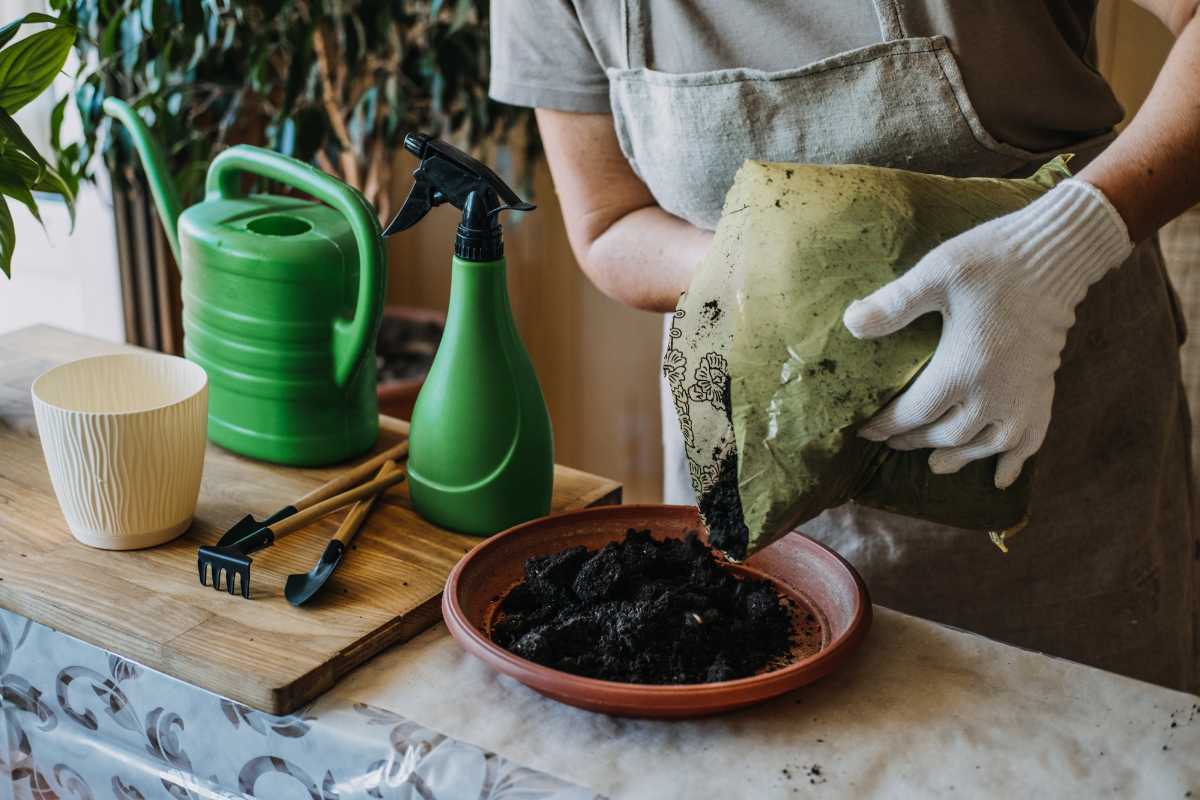
Making your own potting soil isn’t too difficult, but it does require some planning ahead.
First things to consider when making a potting soil mix are:
- Plants you are growing – What are the plants you are growing and want to grow? Plants have different needs. Research the houseplants and look at what their needs are.
- Weight of the soil – You don’t want soil that is too heavy or compact as this will inhibit the plant root’s ability to grow.
- Moisture retention and drainage – You want your mix to be able to hold an adequate amount of water, but not become waterlogged.
- Nutrients – What nutrients do your plants need?
DIY Potting Soil Recipe Materials
You can make different types of potting soil for different plant needs, but the basic ingredients are the same for most mixes. In a ways, it’s similar to cooking. Mix different ingredients together for different types of potting soil.
You simply need to alter the amounts of each to create fast draining mixes for succulents, or nutrient heavy mixes for flowers or vegetables.
Below I’ve listed 10 common things you can use in a potting soil mix.
1. Compost
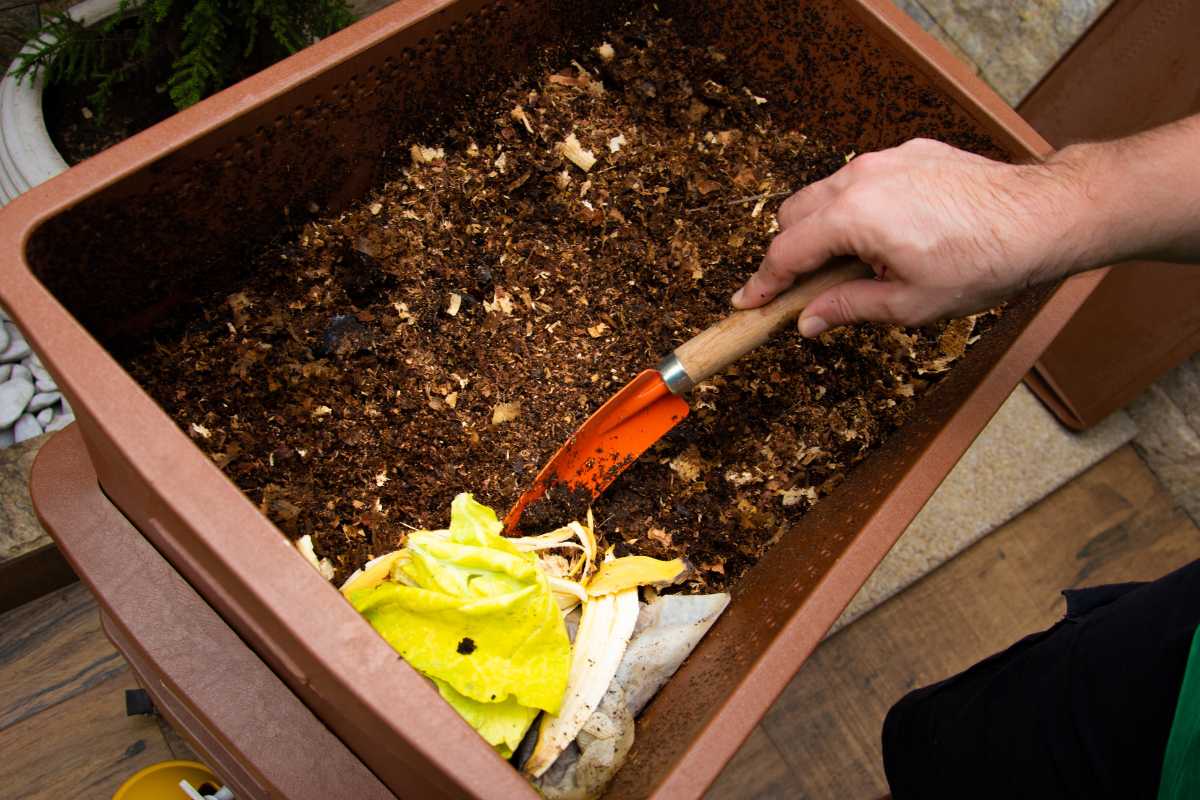
Compost will add nutrients from organic matter to your soil, as well as condition the soil. Compost should make up to 50% of the mix if you’re planting heavy feeders like tomatoes or pumpkins.
You don’t really need much, if any, if you’re using your mix for plants that like fast draining soil – like cacti, succulents, and orchids. But adding a small amount at the bottom of the pot may be beneficial.
You can buy compost or make your own. If you have made your own, you will want to watch out for bugs that can lay their eggs in the compost, and unwanted seeds that can contaminate your potting mix.
You can pour boiling water over your compost or let it dry out before using it to sterilize your compost. However, you should bear in mind that anything you do to kill contaminants in your compost may affect the beneficial microorganisms as well.
If you want to keep these microorganisms in place, I suggest you make up your mix and then leave it for a week or two in a warm sunny spot. Water it before using it for your plants, especially indoor plants, as this will help you identify if you have a problem or not.
Charlie’s Compost is a good option that you can order online.
2. Peat Moss
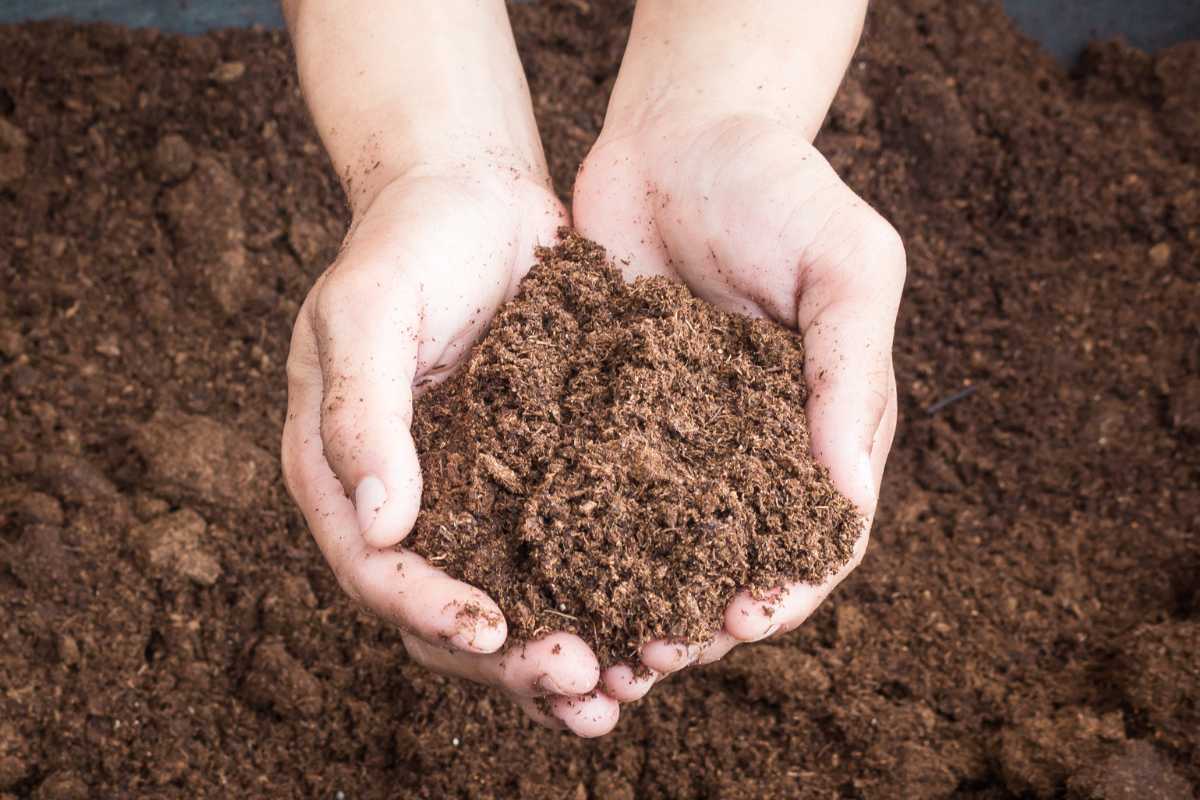
Peat moss makes up most of the commercially available potting mixes. It holds water well, but also aids aeration and drainage.
You can use peat moss in any mix for the same reasons, but it does not hold any nutrients.
Take a look at Organic Sphagnum Peat Moss by Perfect Plants as a good choice online.
3. Coconut Coir
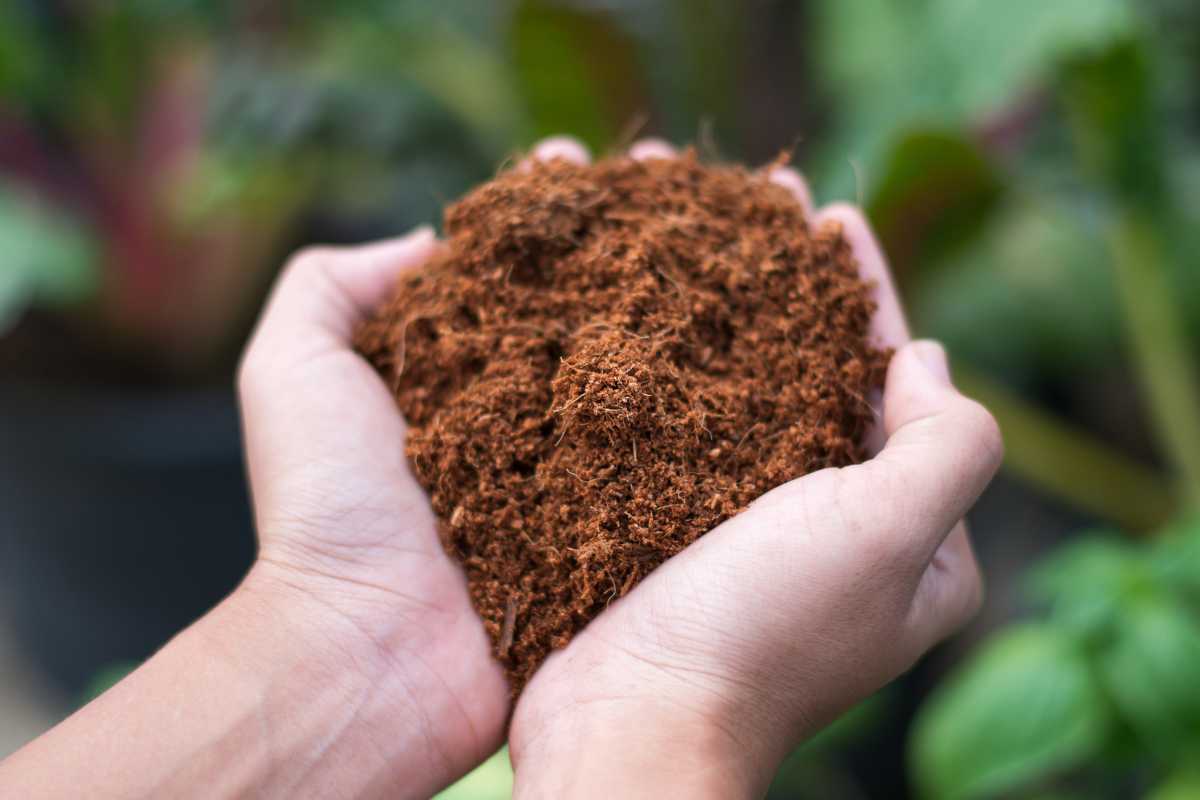
Coconut coir is much the same as peat moss, it has the same properties and is interchangeable with peat moss. Some fast training potting mixes will contain both peat moss and coconut coir.
These Coco Bliss Premium Coconut Coir Pith Blocks are a popular choice and you can find them online easily.
4. Pine Bark
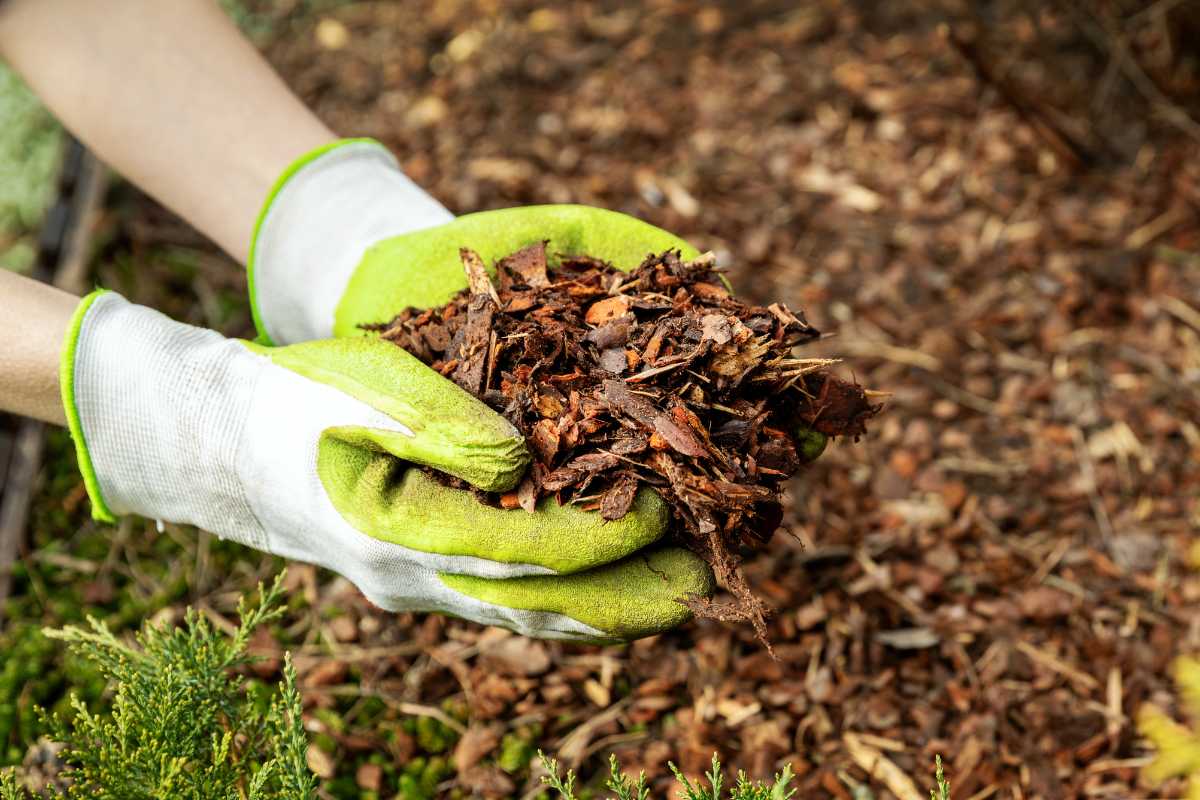
Pine bark is a great choice for orchids. The bark from most fir and pine trees is s great addition to a potting mix. It retains water while providing excellent drainage and aeration.
Coarse sand is an alternative option to pine bark as it has the same effect of improving drainage.
Orchid Potting Bark is a good choice you can find online.
5. Topsoil

Topsoil is very useful if you are filling large pits, as it can bulk out your mix for little cost. The best thing to do is use your own topsoil from your garden, but watch out for contaminants.
If you are buying topsoil, be aware that it can vary greatly in quality and that some commercially available topsoil will already have some soil amendments added to it, like peat moss.
It is best to buy the soil from local suppliers where you can check the quality of the soil before you buy. But you can also find good ones online, like this Coast of Maine Organic Top Soil.
6. Perlite
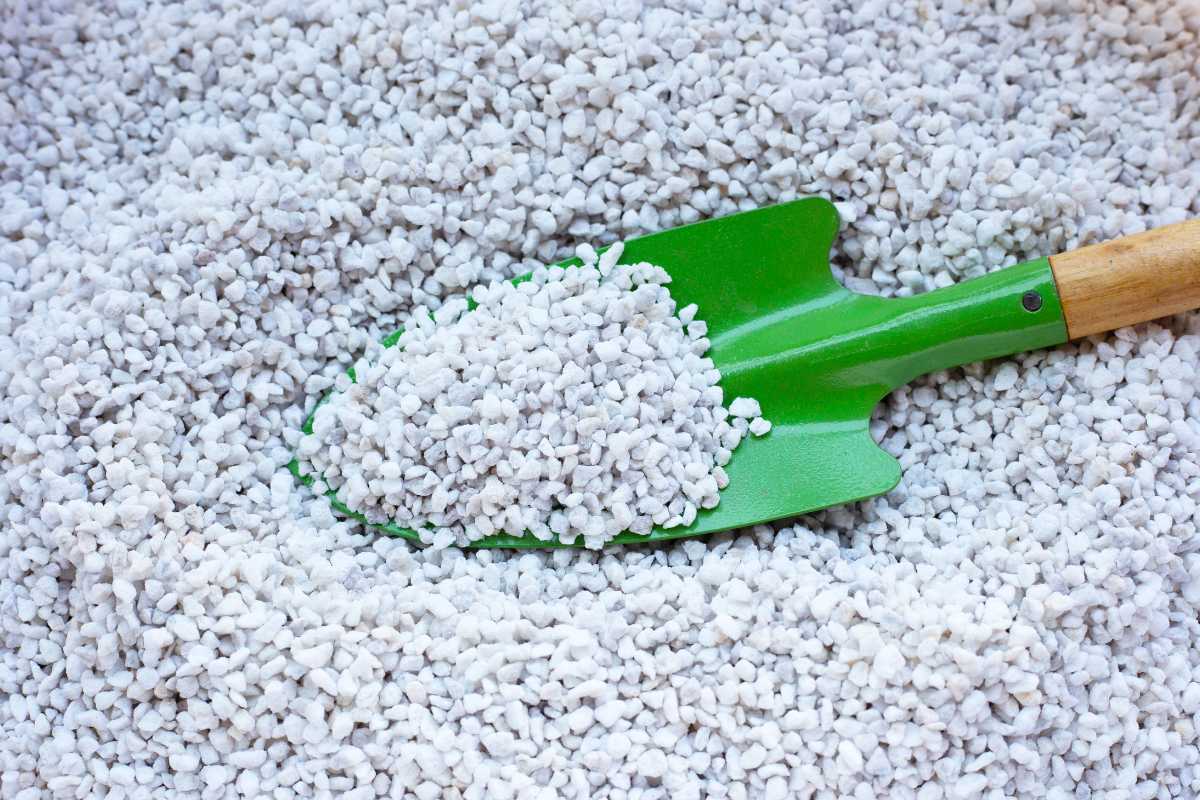
Perlite is a volcanic rock glass that is great for aeration of the soil. It is also able to store moisture, but its main advantage is that it aids drainage.
Perlite can be used in all mixes, but is commonly found in cacti and succulent mix.
Find them easily online like this organic perlite.
7. Vermiculite
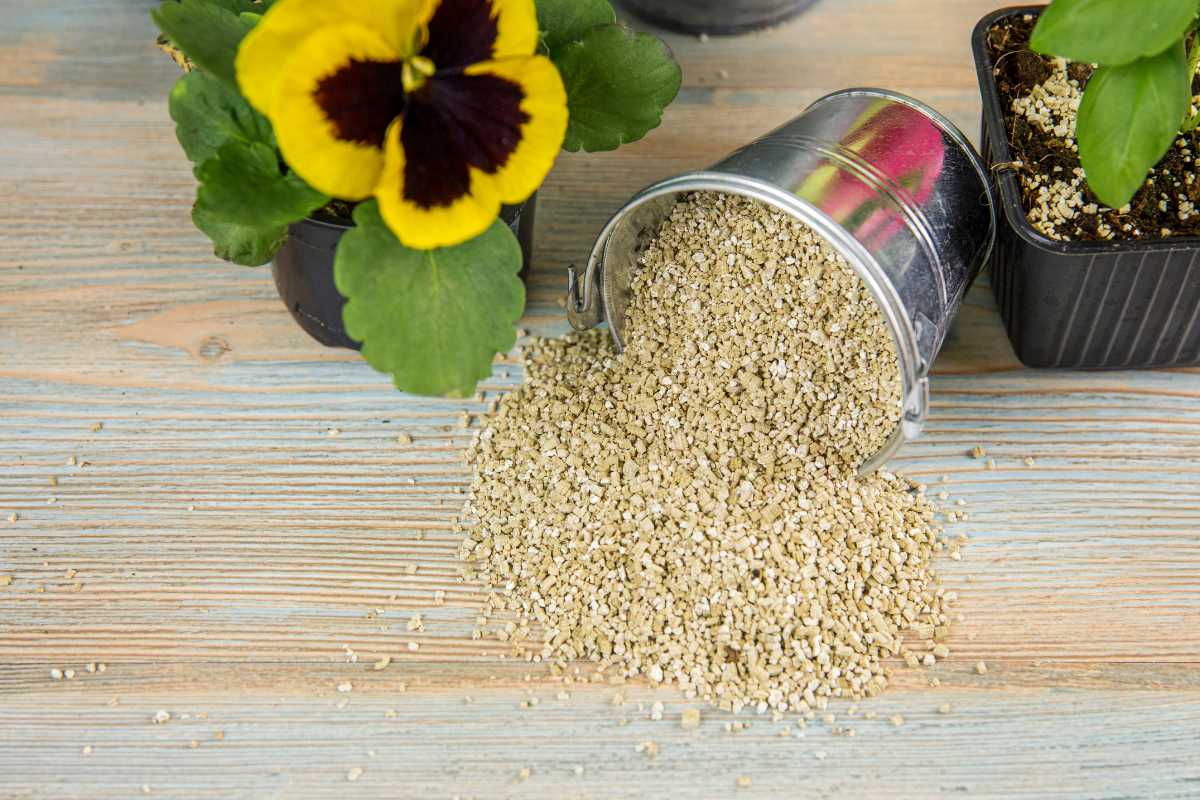
Like Perlite, vermiculite is a non-organic, naturally-occurring mineral that helps with moisture retention, drainage, and aeration.
Unlike perlite, its moisture retaining properties and finer structure make it good for moisture-loving plants and seedlings.
This Horticultural Medium Grade Vermiculite is good and can be bought online.
8. Clay Pellets
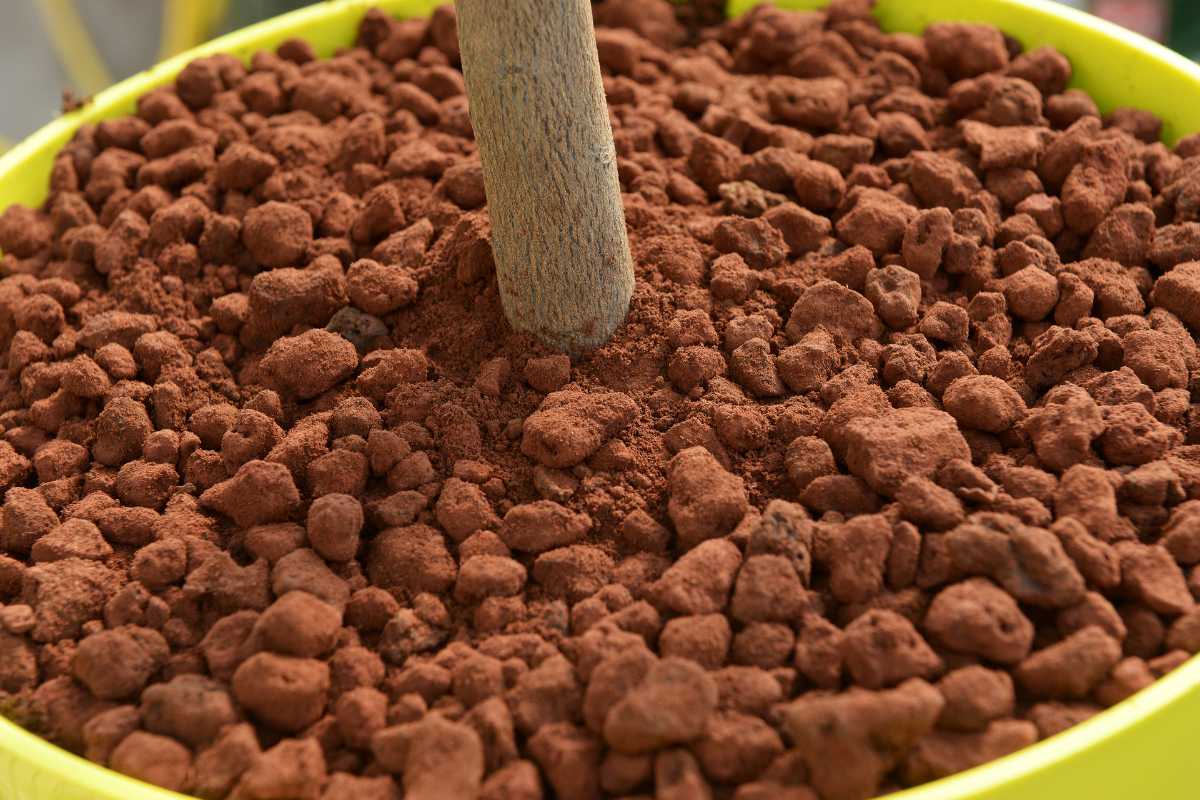
Clay pellets will do the same thing as perlite in aerating the soil for good drainage, but they are more expensive.
Clay pebbles are usually more popular with hydroponics, as they are large enough that they don’t clog up the system.
This bag of Organic Expanded Clay Pebbles are good and not too expensive online.
9. Pumice
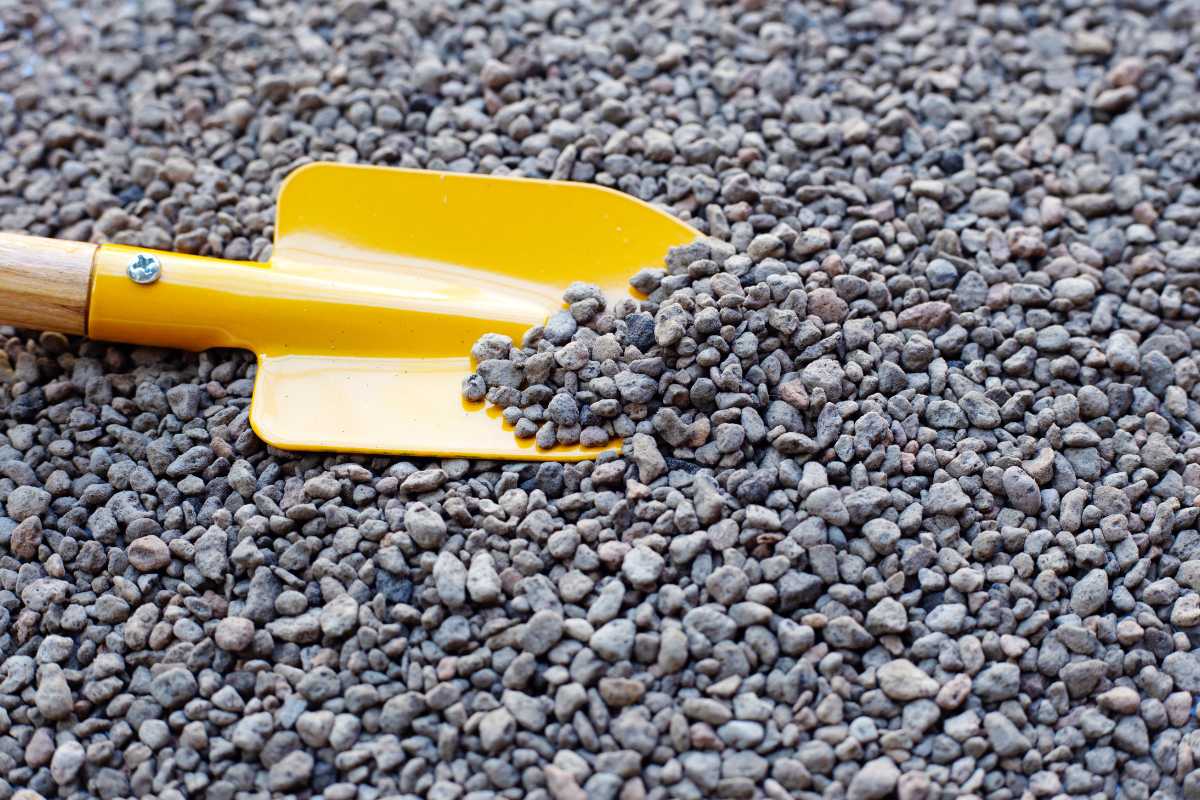
Pumice has similar properties to clay pellets and perlite for aeration and good water drainage. It also comes with the added advantage of it being heavier than both clay and perlite.
The extra weight is good for stabilizing your pots, as well as anchoring plant roots. If you plan on growing larger plants, be sure to add pumice in, so your containers do not tip over.
Pumice can be easily found online.
10. Worm Castings
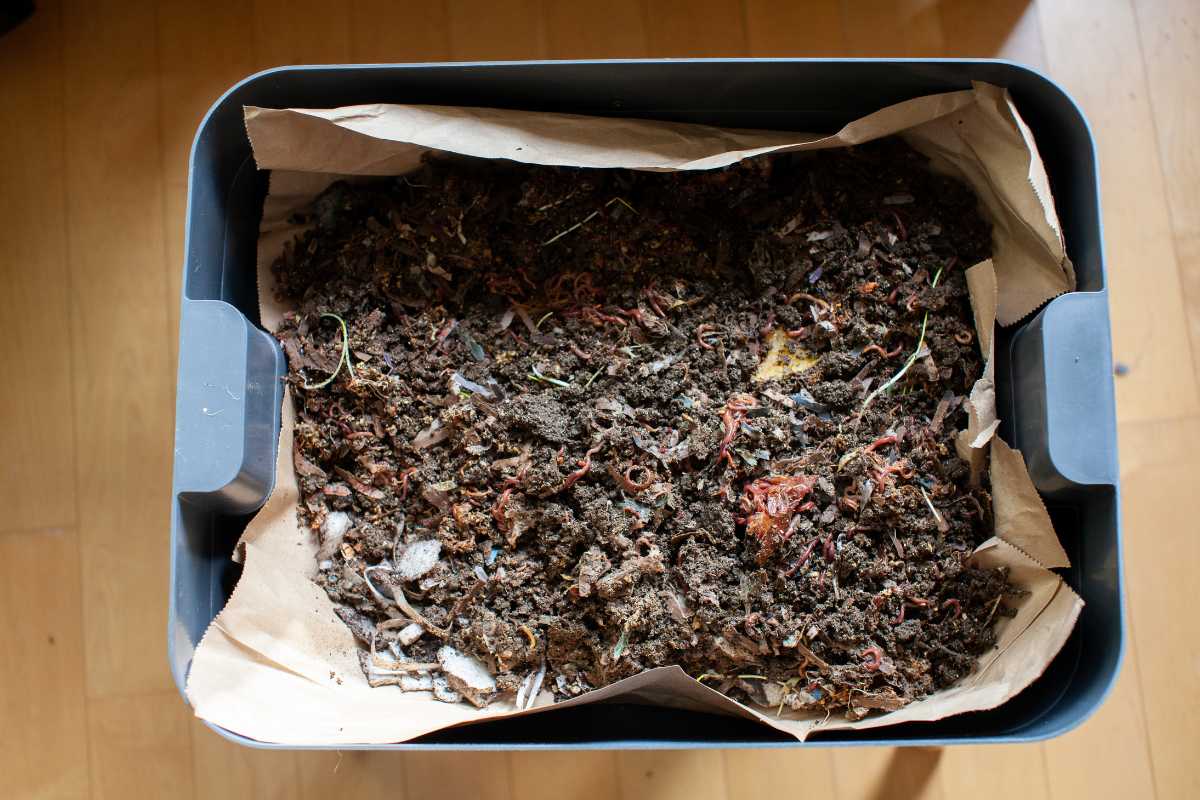
Worm castings are basically worm poop. Worm castings are more nutritious than compost, in fact, they actually make up a lot of the compost in an open air composter.
They will help with the condition of your soil, as well as act as an organic fertilizer that will benefit nearly all plants.
Other natural fertilizer ingredients that can be used like worm castings, could be blood meal, bone meal, kelp meal, and dolomitic limestone.
This Wiggle Worm Soil Builder Worm Castings bag is a popular one that’s found online.
Gardening Tools Needed
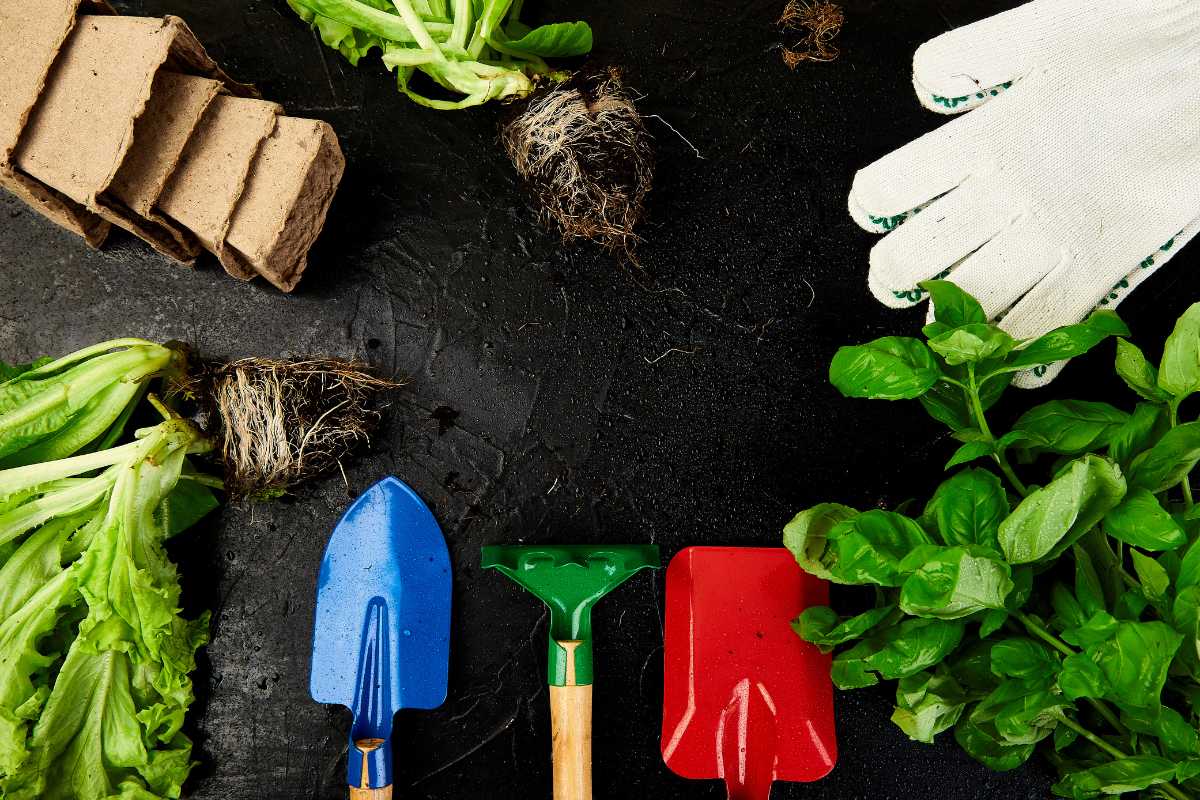
This depends on how much homemade potting soil you will be making, but the essential tools are gardening gloves, a hand trowel, and a plastic tub.
Ideally, you will want to work outside. If you are in an apartment, you will want some plastic sheeting or an old blanket to catch what spills when mixing.
If you are mixing up a lot of potting mix, or using your own compost, you may need a spade to dig out your compost. You can use a wheelbarrow to mix your soil in before putting it in a pot or on the ground.
DIY General Blend Potting Soil Recipe
For a general blend to act like all-purpose potting soil, these are the primary ingredients:
- ⅓ Compost
- ⅓ Topsoil
- ⅓ Non-organic material like perlite, clay pellets, or pumice
Mix all the ingredients in a tub and add a bit of water if your potting soil looks too dry.
DIY Potting Soil for Flowers
Flowers are heavy feeders, so I recommend a mix that is:
- ½ Compost
- ¼ Topsoil
- ¼ Non-organic material like perlite
Like the general blend above. Mix your ingredients in a tub and add water if the potting soil is dry. For an extra nutrient boost, you can add worm castings as well.
DIY Potting Soil for Cacti and Succulents
Cacti and succulents need a well-draining potting mix. You can easily make a good mix by just using non-organic materials and giving your plants a diluted liquid fertilizer every few weeks.
My preferred homemade succulent mix is:
- ¼ Perlite
- ¼ Clay pellets or pumice
- ¼ Coarse sand
- ¼ Compost
Mix your ingredients well, and add a layer of sand or clay pellets/pumice at the bottom of the pot before adding your mix.
DIY Potting Soil for Tropical Plants
Tropical plants prefer soil that is well-draining, fertile, loose, and acidic. I use a mix of:
- 40% Pine bark
- 20% Peat moss or coconut coir
- 20% Perlite
- 20% Compost
DIY Potting Soil for Vegetables
Like flowers, vegetables are heavy feeders. You’ll need good nutrient retention in your potting soil blend. Although different vegetables will like different soil mixes, a good general mix is:
- 50% Compost
- 20% Topsoil
- 20% Perlite
- 10% Worm castings
Homemade Potting Mix Final Thoughts
There’s no reason why you shouldn’t try to create your own potting soil from scratch! It takes time, effort, and patience, but once you have made enough pots of potting mix, you won’t ever go back to buying store bought again.
Here are more articles to learn more about potting soil:
Making Potting Mix FAQs
How can I make my own potting soil?
Making your own potting soil is easy, and you can use any organic materials such as compost, peat moss, vermiculite, perlite, sand, and rockwool. The best way to make your own potting soil mix is to combine equal parts of each ingredient to make a general-use potting soil.
What are the ingredients in potting soil?
The main ingredients in potting soil include peat moss, perlite, vermiculite, sand, and compost. Peat moss is a natural product that helps retain moisture and nutrients. Perlite is a lightweight mineral that absorbs water and air. Vermiculite is a mineral that expands when wet, which makes it ideal for growing plants. Sand is used to help keep the soil loose and aerated. Compost is a mixture of organic matter such as leaves, grass clippings, and manure.
Is it cheaper to make or buy potting soil?
Making your own potting soil is cheaper than buying commercial potting soil, but it takes longer to prepare. You also get healthier plants because your homemade potting soil is optimized for your specific plants.
What is best mixed with potting soil for succulents?
You should mix peat moss with potting soil for succulents. Peat moss is good for succulents because it retains moisture while allowing oxygen into the roots. If you don’t want to buy peat moss, then you could substitute it with other types of mulch. For example, if you live near an apple tree farm, you might be able to find some fresh fallen apples instead of purchasing peat moss. Another option would be to purchase pine needles. They work great too.











